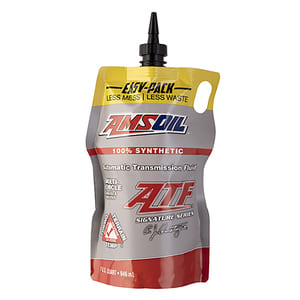Maintaining your vehicle is crucial for its longevity and performance. One critical aspect of car maintenance is taking care of the transmission. A poorly maintained transmission can lead to costly repairs. Discover essential tips for maintaining your transmission and how often you should change the transmission fluid to keep your car running smoothly.
Transmissions are complex machines that can be expensive to repair. However, routine fluid service can prolong the life of your transmission.

Importance of Transmission Maintenance
Transmissions are intricate systems, and repairing them is often costly. Regular fluid service and maintenance can significantly extend the lifespan of your transmission. Here’s a standard maintenance schedule for your transmission:
- 45,000 miles
- 90,000 miles
- 135,000 miles
Adhering to this schedule ensures your transmission stays in good shape. Ignoring it can lead to severe issues down the road.
Transmission Components
Understanding your transmission’s components will help you better manage its maintenance:
Filter in the pan: This keeps debris out of the transmission fluid.
Gasket: Ensures a tight seal to prevent leaks.
Oil pan: Holds the transmission fluid.
Pump: Moves fluid through the transmission system.
Transmission Service Procedure
Servicing your transmission involves several critical steps. Here’s how to approach it:
Removing Bolts
Begin from the back and move to the front.
Leave a couple of bolts in the back to tip the pan forward, allowing fluid to drain without a mess.
Draining Fluid
Properly draining the old fluid is essential. A drain pan is useful to collect the fluid without spilling.
Removing Old Filter
Remove the old filter carefully. Ensure no debris falls into the transmission.
Installing New Filter
Insert the new filter, making sure it’s properly seated. Improper installation can cause air suction issues.
Ensure the filter is securely in place to avoid performance problems.
Installing Bolts
Follow the torque specifications detailed in your service manual to prevent overtightening.
Different transmissions may have varying specifications, so always consult your manual.

Importance of Transmission Fluid Service
Transmission fluid degrades over time, affecting performance. Here’s why regular fluid service is necessary:
Sediment and debris buildup: These can clog the system and reduce efficiency.
Clutch material accumulation: Over time, this can cause significant wear and tear.
Transmission Fluid Stress Factors
Several factors stress transmission fluid, including:
Heat: Prolonged exposure to high temperatures can break down transmission fluid.
Mechanical stress: Constant use can lead to the fluid wearing out.
Qualities of Good Transmission Fluid
For optimal performance, choose transmission fluid with these qualities:
Strong base oils: These provide a solid foundation.
Effective additive mix: Prevents varnish and buildup in the valve body.
Benefits of Quality Transmission Fluid

Using high-quality transmission fluid offers several advantages:
- Prevents varnish buildup
- Prevents valve body buildup
- Longer service intervals: High-quality fluids, like AMSOIL’s Signature Series, can last twice as long as standard fluids in severe service situations.
Transmission Wear Indicators
Recognizing wear indicators can help you address issues early:
- Clutch pack wear
- Valve body varnish
- Magnet debris accumulation: If you see excessive debris on the magnet, it’s time for a fluid change.
Transmission Fluid Types
Different types of transmission fluids are available, including:
- Conventional
- Synthetic
- High-mileage
Choose the one that suits your vehicle’s needs best.
Signs of Transmission Problems
Be on the lookout for these signs, indicating potential transmission issues:
- Slipping gears
- Rough shifts
- Delayed engagement
- Unusual noises
Tools Needed for DIY Transmission Service

For those who prefer DIY maintenance, these tools are necessary:
- Socket set
- Torque wrench
- Drain pan
- Funnel
- New transmission fluid
Transmission Fluid Color Guide
The color of your transmission fluid can indicate its condition:
Red/pink: New fluid
Brown: Used but functional
Dark brown/black: Needs replacement
Transmission Service Frequency Factors
Several factors affect how often you should change transmission fluid:
- Vehicle make and model
- Driving conditions
- Towing habits
Tailor your service schedule to these factors for optimal performance.
Benefits of Professional Transmission Service

Professional service offers several advantages:
Expertise: Technicians have the knowledge and tools to do the job right.
Proper disposal of old fluid
Comprehensive inspection: Identifies other potential issues.
Transmission Fluid Additives
Additives in transmission fluid serve specific purposes:
Purpose: Enhance fluid performance.
Effectiveness: Depends on the quality and type of fluid.
Potential risks: Ensure compatibility with your transmission to avoid damage.
Transmission Cooling System
The cooling system plays a crucial role in transmission health:
Purpose: Keeps the transmission at optimal temperatures.
Components
Maintenance tips: Regularly check and maintain to prevent overheating.
Transmission Filter Types
Different filters are designed for various transmission systems:
- Screen filters
- Paper filters
Choose the appropriate type for your vehicle to ensure efficient filtration.
Transmission Pan Gasket Materials
Gaskets come in various materials, each with its pros and cons:
- Cork
- Rubber
- Silicone
Select the right material to prevent leaks and ensure a tight seal.
Transmission Fluid Capacity
Maintaining the correct fluid level is imperative:
- Check fluid level: Regularly monitor and top-up if necessary.
- Consequences: Overfilling or underfilling can cause severe transmission issues.
Transmission Fluid Change vs. Flush
Understand the differences to choose the right service:
Change: Replaces old fluid with new, basic maintenance.
Flush: Removes all old fluid, more thorough cleaning.
Transmission Service for Different Vehicle Types

Transmission service varies across vehicle types:
- Automatic transmissions
- Manual transmissions
- CVT transmissions
Each type requires specific services and intervals.
Transmission Service for High-Mileage Vehicles
Older vehicles need special considerations:
- Recommended products
- Potential risks and benefits
- Proper care can prolong a high-mileage vehicle’s life.
Transmission Service and Vehicle Warranty
Regular service can impact your warranty:
- How service affects warranty
- Documenting service
- Manufacturer-specific considerations
- Ensure all services comply with manufacturer guidelines to maintain your warranty.
Regularly changing your transmission fluid is crucial for maintaining vehicle health. Follow this guide to ensure you know how often you should change transmission fluid.

